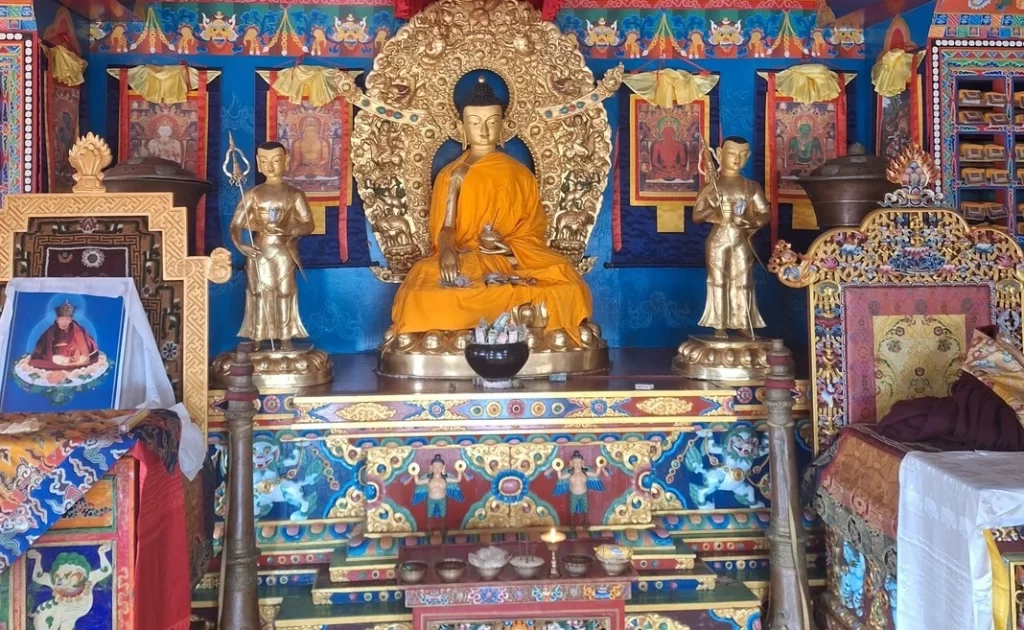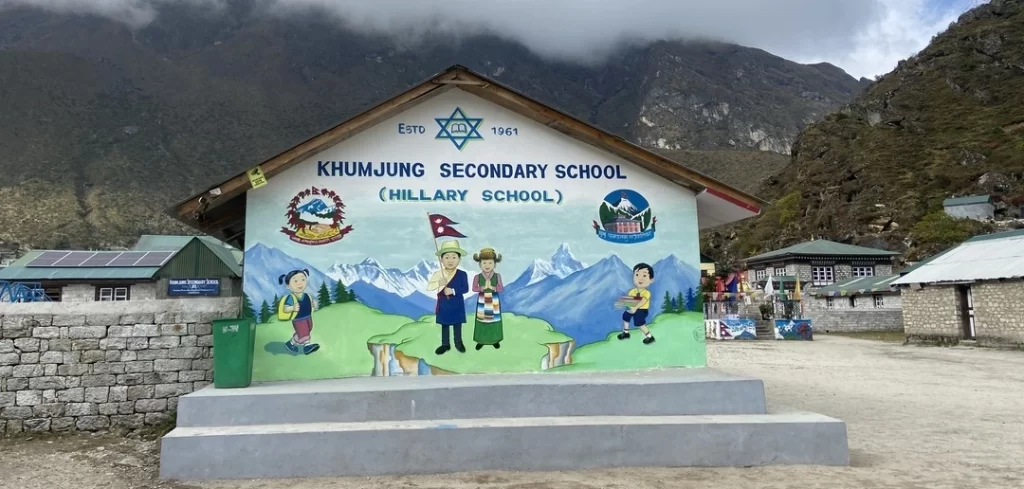Khumjung Village: A Cultural and Natural Gem in the Everest
Khumjung Village is a unique settlement located in the Khumbu region of Nepal, situated among the world’s tallest peaks and offering visitors an authentic experience of Sherpa culture. Known for its serene environment, Khumjung is more than just a destination for trekkers and climbers—it’s a place where travelers can explore traditional Himalayan life, witness breathtaking landscapes, and delve into the historical significance of this area. The village, at an altitude of about 3,780 meters (12,402 feet), provides an immersive experience into the local culture and an ideal respite before embarking on more challenging treks in the Everest region.
Khumjung Village holds a rich history that traces back to the early Sherpa settlements in the Khumbu region. Established by the Sherpas who migrated from Tibet, Khumjung has preserved much of its ancient architecture and cultural heritage. The village is deeply rooted in the Sherpa way of life, marked by their spirituality, community-focused lifestyle, and respect for nature. Throughout history, Khumjung has been a place where traditional practices have coexisted with the demands of modern tourism, creating a unique environment where visitors can connect with the history of the Sherpa people and the mountain traditions that define their lives.

Located near Namche Bazaar, the bustling trade and tourism hub of the Everest region, Khumjung lies at the heart of the Khumbu region. The village is accessible via well-established trekking routes from Lukla, where most Everest-bound trekkers begin their journey after a short flight from Kathmandu. Reaching Khumjung requires a combination of scenic trails and moderate trekking effort, making it a rewarding side trip for those exploring the Everest Base Camp trek or nearby Gokyo Lakes. Helicopter services are also available for those seeking a faster, panoramic journey to Khumjung.
The Sherpa people of Khumjung are known for their unique culture, which blends Tibetan Buddhist traditions with local customs and practices. The Sherpas are deeply spiritual, and their lives revolve around the teachings of Buddhism, which emphasize compassion, humility, and a profound respect for nature. Sherpa traditions are evident in their clothing, food, festivals, and family life. Visitors to Khumjung can observe the traditional prayer flags, intricate stone carvings, and sacred chortens (Buddhist shrines) that dot the landscape, each symbolizing protection and blessings from the mountains and deities.
Khumjung Monastery (Gompa)
The Khumjung Monastery, or Khumjung Gompa, is one of the village’s most cherished sites, both spiritually and historically. This monastery is home to a curious artifact: a preserved piece that locals believe to be the scalp of the legendary Yeti. The monastery itself is a tranquil space for worship and community gatherings, adorned with colorful Buddhist murals, sacred texts, and statues. The monks here play an essential role in preserving the religious and cultural teachings that have guided the Sherpa community for generations. The Yeti scalp adds an element of mystery to the monastery, making it a captivating attraction for visitors intrigued by Himalayan folklore.

Khumjung School: A Legacy of Sir Edmund Hillary
One of the most significant landmarks in Khumjung is the Khumjung School, established in 1961 by Sir Edmund Hillary, the first person to conquer Mount Everest along with Tenzing Norgay Sherpa. Hillary’s work in the region went beyond mountaineering; he dedicated himself to improving education, healthcare, and infrastructure in Khumjung and surrounding areas. The Khumjung School is a testament to his legacy, providing quality education and empowering local youth to pursue new opportunities. The school continues to educate generations of Sherpa children, offering them a blend of modern curriculum while respecting and preserving Sherpa culture.

Flora and Fauna of Kumjung Village
The Khumbu region, where Khumjung is situated, is known for its rich biodiversity despite the harsh climatic conditions. The surrounding forests are filled with rhododendron, juniper, and pine trees, creating a beautiful contrast against the rugged Himalayan terrain. Wildlife in the area includes Himalayan tahr (a type of wild goat), musk deer, and an array of bird species, including the colorful Himalayan monal, Nepal’s national bird. These forests and animals are highly valued by the Sherpa people and are often protected through local conservation efforts. The varied flora and fauna make Khumjung a fantastic destination for nature enthusiasts and photographers.
Khumjung’s Local Festivals
Khumjung is known for its vibrant celebrations of traditional Sherpa festivals, which reflect the region’s deep-rooted spirituality and sense of community. Two major festivals celebrated here are Dumji and Mani Rimdu. Dumji is a family-centered festival honoring the birth anniversary of Guru Rinpoche, the Buddhist saint who is credited with bringing Buddhism to Tibet and the Himalayas. Mani Rimdu is a larger festival celebrated with dance rituals, masked performances, and prayers, symbolizing the victory of Buddhism over evils. Participating in or witnessing these festivals offers a rare opportunity to see the spiritual side of Khumjung’s Sherpa community.
Lifestyle of the People in Khumjung
Daily life in Khumjung village revolves around agriculture, animal husbandry, and tourism. Many villagers raise yaks for milk, meat, and transportation, while others tend to small farms where they grow potatoes and other hardy crops suited to the high altitude. With the rise of tourism, many locals have found work as guides, porters, and hospitality providers, creating a balanced lifestyle that honors both traditional practices and modern needs. The Sherpas’ warm hospitality is legendary, and visitors often feel welcomed into village life, with opportunities to learn about their customs and values.
The Stunning Views and Landscapes
One of the most appealing aspects of Khumjung is its natural beauty. The village is set against a backdrop of some of the world’s most famous peaks, including Mount Everest, Ama Dablam, and Thamserku. From various vantage points in Khumjung, trekkers and photographers can capture breathtaking panoramas of these towering mountains. The lush valley, blanketed in rhododendron forests during spring, adds a splash of color to the rugged mountain terrain, creating a serene and inspiring landscape that attracts travelers from around the world.
Climate and Best Time to Visit Khumjung
Khumjung village experiences a mountainous climate, with cold winters and mild summers. The best times to visit are during the spring (March to May) and fall (September to November) seasons when the weather is stable, skies are clear, and temperatures are relatively mild. These periods also coincide with the blooming of rhododendrons in spring and the vibrant colors of fall, enhancing the scenic beauty of Khumjung. Winter visits are possible but can be challenging due to snowfall and low temperatures, while the monsoon season in summer brings heavy rains that make trekking difficult.

Local Cuisine and Dining Experiences
Khumjung offers an array of traditional Sherpa dishes, known for their hearty and flavorful nature. The local cuisine includes dishes like dal bhat (a nutritious meal of rice, lentil soup, and vegetables), thukpa (a warming noodle soup), and Sherpa stew, which is made with a mix of yak meat, potatoes, and local herbs. Tea houses in Khumjung serve these meals in a cozy, rustic environment, allowing visitors to savor the flavors of the Himalayas. Dining here is also a cultural experience, as meals are often prepared with locally grown ingredients and reflect Sherpa hospitality.
Accommodation Options in Khumjung
Khumjung offers a variety of accommodation options, ranging from guesthouses to homestays with local families. These lodgings are typically simple yet comfortable, providing a warm and authentic Sherpa experience. Staying with local families offers a unique opportunity to engage with Sherpa culture, learn about traditional home life, and experience daily routines. Lodges and tea houses are more suited to trekkers looking for basic amenities and a comfortable place to rest after a day of hiking. Regardless of the choice, accommodation in Khumjung village is marked by the welcoming spirit of the Sherpa community.
Trekking Around Khumjung
For trekking enthusiasts, Khumjung serves as a base for exploring some of the most scenic trails in the Khumbu region. Popular routes include the trail to Gokyo Lakes, which provides stunning views of glacial lakes and offers a less-crowded alternative to the Everest Base Camp trek. The village also connects to several trails that lead to other Sherpa settlements, monasteries, and viewpoints, making it an ideal spot for day hikes and acclimatization before ascending to higher altitudes.
Preservation Efforts and Environmental Initiatives
The community in Khumjung village takes environmental conservation seriously, recognizing the importance of preserving their unique natural surroundings. Local initiatives focus on waste management, wildlife conservation, and sustainable tourism practices to minimize the environmental impact of visitors. The Sagarmatha National Park, a UNESCO World Heritage site encompassing the Khumbu region, supports these efforts, helping to protect both the cultural and natural heritage of Khumjung and surrounding areas. Visitors are encouraged to respect these initiatives by practicing eco-friendly trekking and contributing to local conservation efforts.
Conclusion
Khumjung Village is not just a destination but a journey into the heart of Sherpa culture and the Himalayas’ spectacular landscapes. From its legendary monastery to its historic school and welcoming community, Khumjung offers a genuine experience of Nepal’s mountain culture and natural beauty. Whether you’re trekking, seeking spiritual insight, or simply looking to unwind amid breathtaking scenery, Khumjung provides an unforgettable experience that leaves a lasting impression.
FAQs
What is Khumjung Village best known for?
Khumjung is known for its rich Sherpa culture, historical monastery, and stunning Himalayan views.
How can I reach Khumjung Village?
Khumjung is accessible via trekking from Lukla or a helicopter ride from Kathmandu.
What is special about the Khumjung Monastery?
The monastery houses a relic believed to be a Yeti scalp, adding to its cultural mystique.
Is Khumjung a good spot for wildlife observation?
Yes, the area is home to Himalayan tahr, musk deer, and various bird species.
What makes Khumjung unique among Himalayan villages?
Khumjung’s historical ties, cultural richness, and stunning mountain views make it stand out as a unique destination.



